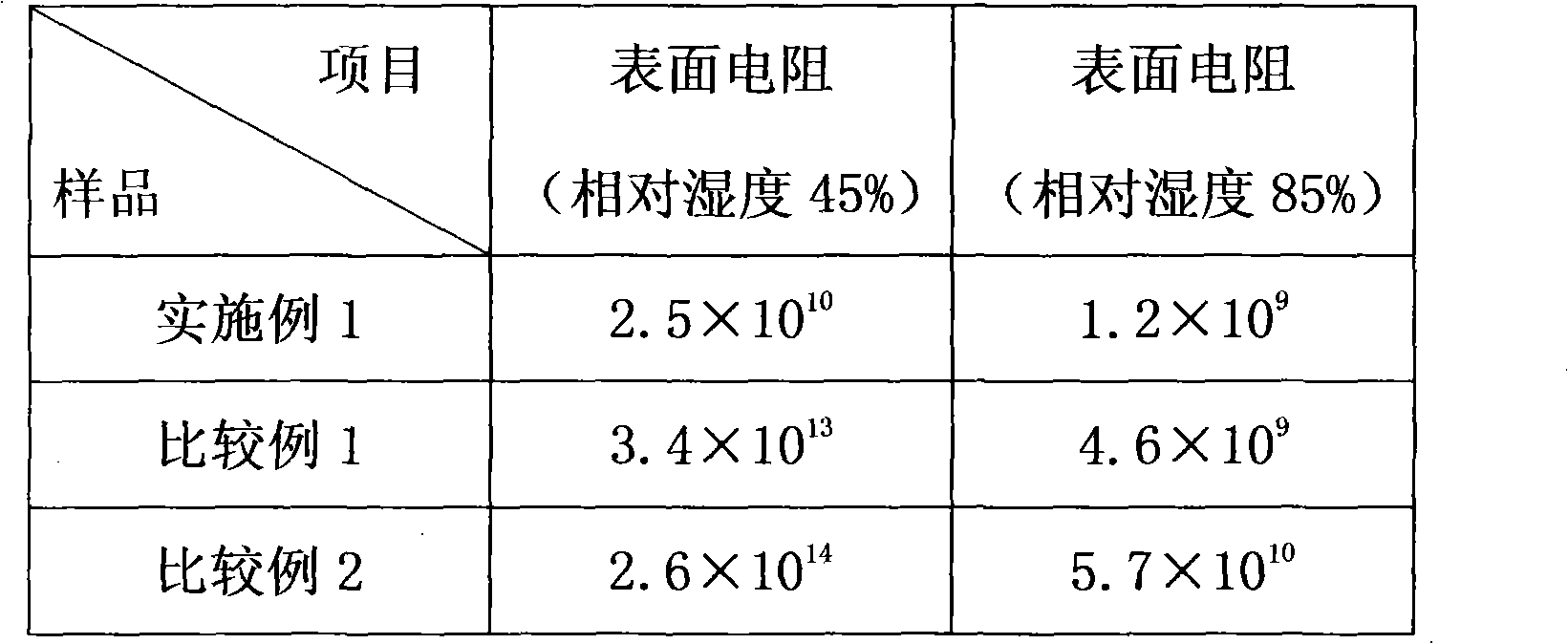Thermal sublimation photographic paper electrostatic resistance coatings
An antistatic and thermal sublimation technology, applied in the direction of the photosensitive material substrate/auxiliary layer, etc., can solve the problems of reducing surface resistance, contaminating the image receiving layer, and deteriorating the bonding fastness, etc., to ensure the effectiveness and permanence, excellent The effect of antistatic properties, good adhesion properties
- Summary
- Abstract
- Description
- Claims
- Application Information
AI Technical Summary
Problems solved by technology
Method used
Image
Examples
Embodiment 1
[0012] permanent antistatic agent 5
[0013] Auxiliary antistatic agent 12
[0014] Titanate coupling agent 0.6
[0015] Dispersant 0.2
[0016] Acrylic 15
[0017] Brightener 0.005
[0018] Leveling agent 0.03
[0019] Toluene 30
[0020] Butyl acetate 28
[0021] Auxiliary antistatic agent TiO 2 Add the conductive powder into the high-speed disperser, add the dispersant (Disponer912) and titanate coupling agent, stir to carry out the coupling reaction, and then disperse at high speed to make a dispersion liquid. Add this dispersion into the acrylic resin solution and stir well, add permanent antistatic agent (IRGASTAT P18 from Ciba), whitening agent and leveling agent to make antistatic coating liquid. The coating solution was coated on a polyethylene terephthalate (PET) film with a metering rod, placed in an oven, and dried at 100° C. for 3 minutes to form an antistatic coating.
PUM
 Login to View More
Login to View More Abstract
Description
Claims
Application Information
 Login to View More
Login to View More - R&D
- Intellectual Property
- Life Sciences
- Materials
- Tech Scout
- Unparalleled Data Quality
- Higher Quality Content
- 60% Fewer Hallucinations
Browse by: Latest US Patents, China's latest patents, Technical Efficacy Thesaurus, Application Domain, Technology Topic, Popular Technical Reports.
© 2025 PatSnap. All rights reserved.Legal|Privacy policy|Modern Slavery Act Transparency Statement|Sitemap|About US| Contact US: help@patsnap.com

